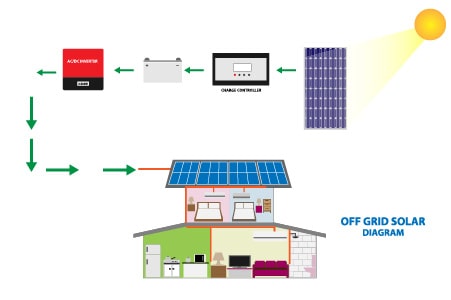Overuse of fossil fuels has contributed to global warming and made the planet more susceptible to frightening wildfires, storms and other extreme weather events.

A shift to wider use of solar energy can help. Meeting some of the world’s daily needs for energy to power homes, businesses and conveniences by tapping into the near limitless source of renewable energy available from the sun can aid much needed environmental sustainability. Of the renewable sources of all energy solar is the most abundant. Net metering has positive incentives that can help to make the shift to using more solar energy more attractive. Among net metering’s benefits is the possibility to see a home’s electric meter work moving backwards.
As you read this article you will be educated on the benefits of net metering, what electricity cogeneration means, what a net metering cap is, other solar facts, and you will leave with a better understanding of net metering and the important role it plays in the solar industry.
Free Energy Plus Refunds
The sun provides far more energy than humans need to power their homes and industries. Plus, available technology has the ability to turn sunshine into electricity through rooftop solar photovoltaic panels. Collecting, transforming and using that energy does not require polluting the land, air or water. Solar energy is clean energy and once the solar power infrastructure is put into place, gathering and using solar energy is free. In fact, gathering and using energy captured through rooftop solar PV panels is better than free. People can get credits from the power company through net metering.
A Look At Net Metering

Net metering is the ability for home and business owners to return the excess electric energy generated by their rooftop solar PV panels to the local power grid and receive credit for it. That means if a structure generates more electricity than it needs to power the lights, appliances and other systems it uses, the excess electricity would be added to the power grid for other people to use. A meter would tally the net difference between how much energy a property produced and how much it consumed. The credit would offset the cost of any power the structure uses from the power grid in the future.
The Benefits
Net metering’s benefits are many and diverse. First, consumers can reduce or even eliminate their monthly power bill. Those properties that produce excess energy can even make some money. It uses a system that’s inexpensive and easy to use. It takes pressure off the power grid. This is very important during peak consumption periods. Each solar power generating home can help power other homes in their community. Ultimately, communities using renewable solar energy can potentially produce all the electricity they need. Plus, it encourages and enables consumers to become involved in alternative energy production, help protect the environment and preserve natural energy resources. It also allows utility companies to save money on installing and reading meters and billing.
Net metering’s other benefits for property owners include eliminating the need for a battery storage system to hold the excess energy they generate or a backup generator for use when there’s no solar power available. Plus, it eliminates the costs of maintaining those systems, provides solar power without hassles and allows for seasonal storages. That means the cost of powering the home or business during the cold and winter months can be offset by the solar power the property produced during the months that were warm and sunny. Net metering’s benefits make the system well worth it.
Electricity Cogeneration
Effective and efficient use of plugin solar panels and other types of solar power infrastructure can provide additional power grid electricity along with what’s produced by the power company. This enables property owners with solar power based systems to become part of an electricity cogeneration system or network that can reduce the strain on regional power grids. As more property owners add their solar energy share into the power grid, it can also cause the pay rate for retail prices of electricity to fall. Electricity cogeneration means lower power bills for consumers and access to additional energy on the power grid especially in peak use periods.
Net Metering Cap
There is a limit or cap on how much credit solar energy property owners can get on their energy bill. The amount of solar energy that’s eligible for the net metering’s benefit program varies in different regions around the country. The utility companies allow differing amounts based on whether it’s a privately or publicly owned solar system. The types of systems the cap has the most impact on are large-scale solar panel farms. In some parts of the country most residential systems with single-phased solar energy systems that produce less than 10 kilowatts of electricity are exempt from the net metering cap.
Important Solar Energy Facts
There are many things people should know about solar energy.

Solar cells transform sunlight into electricity. In one hour, enough solar energy hits the earth to meet the planet’s entire energy needs for a year. Fossil fuels create 80% more dangerous carbon emissions than solar energy. The average residential solar panel contains 60 solar cells. Each of them can produce 5 watts of power. Together they produce 5,000 watts. People can install solar systems on metal, tile, shingle and most other types of roofs. Solar systems can be financed through loans, leases, cash purchase or power purchase agreements.
An Excellent Investment
Over the course of 20 years homeowners who add solar systems can see savings of between $8500 and $34,000.

In Colorado, Iowa, Minnesota, New York and South Carolina, purchasing a solar system delivers a better return on investment than does the S&P 500. Most residential solar systems have a monitoring system that shows the amount of energy produced, how much carbon emissions they’ve avoided and what maintenance needs or issues the system has. Adding an average-sized solar system to a home increase the property value by $15,000. With the money saved on energy bills, the average solar system will pay for itself in about 7.8 years.
Going Off The Grid
Many people compare net metering’s benefits in the 41 states where it’s available to going off the grid. Some feel they will leave a smaller carbon footprint and get more benefits if they use plugin solar panels or some other type of solar system and go off the power grid. While going off the grid is a powerful step, many feel net metering’s economic value, energy contribution to the larger community, improvement of communal energy sustainability and availability of the grid to supplement solar power, at night, in winter and other times energy isn’t available from solar systems or a solar battery, make it a better choice.
A Clear Solar Energy Definition
To fully appreciate the solar energy facts, many people require a clear solar energy definition. Solar energy is power drawn from sunlight and transformed into electricity and other forms of power people use daily. Compared to the other natural, renewable sources of all energy solar is by far the most abundant. Currently the solar energy share of the electric power people use every day in the United States is only 0.6%. The U.S. Department of Energy see rapid growth in the solar industry and predicts the about 400,000 solar powered U.S. homes today will become 3.8 million within the next decade as the amount of renewable energy used continues to grow.
Net metering’s value to environmental sustainability and power grid electricity is undeniable. It has the unique ability to make an electric meter work backwards, the potential to help increase power grid electricity totals, reduce the pay rate for retail and make it financially rewarding for solar to become the most popular type of renewable energy used.
